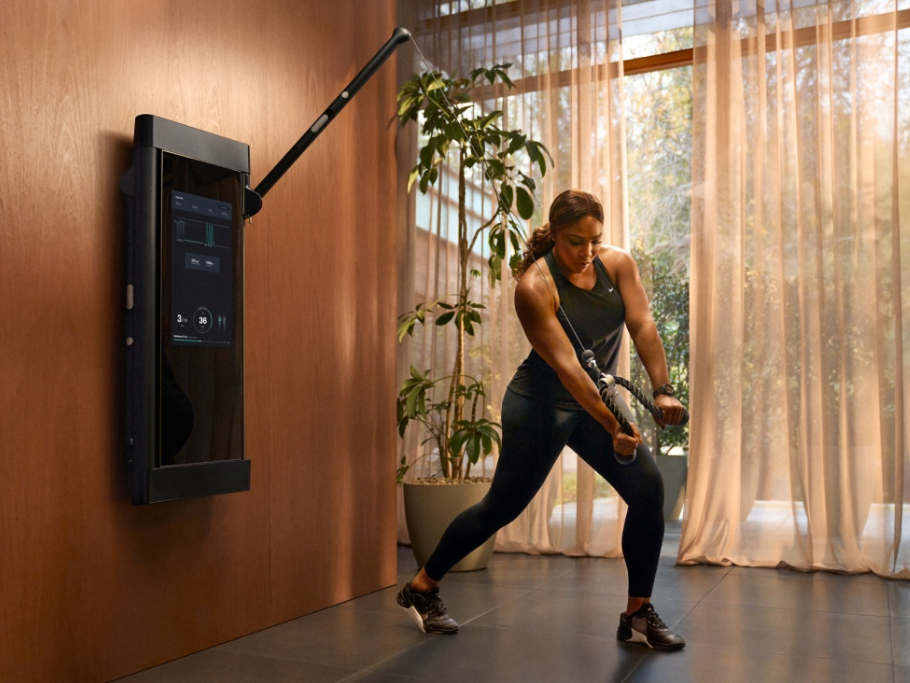Tonal and Mirror are two pieces of equipment that stand out from the rest in high-end home gyms. People often debate on tonal Vs. mirror and the differences between tonal and mirror. These are two of the best examples of wall-mounted gym equipment that you can use anywhere in your home to get a full workout. How can you get a good workout from equipment mounted on the wall? These are smart home gyms with big touch screens mounted on the wall that help you do exercises & make you fit, practice your form, sign up for gym classes, and do a lot more.
You don't need exercise bikes or anything else besides your body to get a good workout. All you need is the panel, any extra parts that come with it, and some floor pads. But while Tonal and Mirror take this approach, there are some key differences between tonal and mirror. Read further to learn about tonal vs. mirror and choose the one that suits you well.
Tonal Vs. Mirror Difference- Smart Features
Here's what you should know about tonal vs. mirror features. Both panels have smart components that track your form and give you goals or progression scores to help you stay on track. You can set accurate schedules for your activities and keep track of the time and stages of your workout on the touch screens. Tonal, on the other hand, goes much further with smart tracking for people who love numbers. Your reps are counted by the smart handles and smart bars.
As you get stronger, a "digital weight" system can automatically add more resistance, making sure you're always getting better. The Tonal gives you a lot of customized workout reports with graphs and percentages. Setting it up takes a lot of time, but you get a lot of workout data in return and never have to worry about whether or not you're using the right weight.
Without a doubt, mirror is easier to use. Smart workout data, however, is harder to get unless you buy the "smart weights'' dumbbells. A mirror is more about what is happening on the screen as you move. Data focuses on endurance stats like how much time is left in the workout and how your time is improving. It also gives you some basic suggestions for classes you might like. There is also more of a social aspect since the Mirror panel shows you when you and the rest of the class are doing the same exercises. It even lets you share videos and feel like you are in a group, even at home.
 Tonal Vs. Mirror
Tonal Vs. Mirror
Tonal Vs. Mirror Difference- Design
When we talk about tonal and mirror dimensions, a Tonal is 51 inches tall and 22 inches wide, and the Mirror is 52 inches tall and 22 inches wide. Therefore, tonal and Mirror dimensions are pretty much the same size. They are big touchscreens with sensors that you can mount safely on a wall in the corner of your home. There should be enough space around it for you to work out, and the floor should be strong enough to handle your workouts.
But when you look more closely, you can see several important design differences in tonal Vs. Mirror. The Tonal panel is bigger, bulkier, and heavier. Tonal has strong sides that can hold workout bars in different positions for resistance training, connected workout benches, and more. Keep reading to learn more about tonal vs. mirror.
The Mirror, on the other hand, is a model who tries to look like, well, a mirror. The equipment is similar to Tonal in that it has touchscreen options, training tools, and sensors, but it is smaller. If you don't have a lot of space, that design element can help. It's also easier to set up, but it can't be used for as many types of workouts as Tonal.
Tonal Vs. Mirror Difference- Workout Options
Let's look at the exercises you can do with each model. One of the best things about each product is the built-in guides. They have big, clear guides for all moves and help you keep track of your form so you don't make mistakes that could hurt you or stop you from getting stronger. Both let you make a profile based on what kind of workouts you want. Both units have a library with tens of thousands of different workouts either for morning or evening.
There are two main differences that stand out. Tonal cares more about form and growth than streaming live workouts. Mirror has live events often and encourages people to work out with others.
Even though both panels can be used for a wide range of exercises, the Tonal is more focused on strength training than the Mirror, with its weights and resistance. Tonal supports more than 200 strength training moves, such as barbell presses, deadlifts, bicep curls, and squats with resistance. You can see all of them in different ways. It's an impressive lineup, especially if you want a full gym at home without taking up too much space.
Final Words
Here's the conclusion of tonal vs. mirror. Tonal is the best workout, especially if you want to build muscle or keep track of your progress. The Mirror is a more social option, with a lot of live events and lots of bodyweight exercises to help you work up a sweat. But it doesn't put much of an emphasis on strength training.
Even though they look alike, these two types of home gym equipment are very different. A mirror is easier to start because it costs less than half as much as a Tonal. However, people who want serious results may be happier with Tonal, even though it costs more to get started. However, you can read the above-mentioned points of toner Vs. Mirror so that you can choose the one for you.

